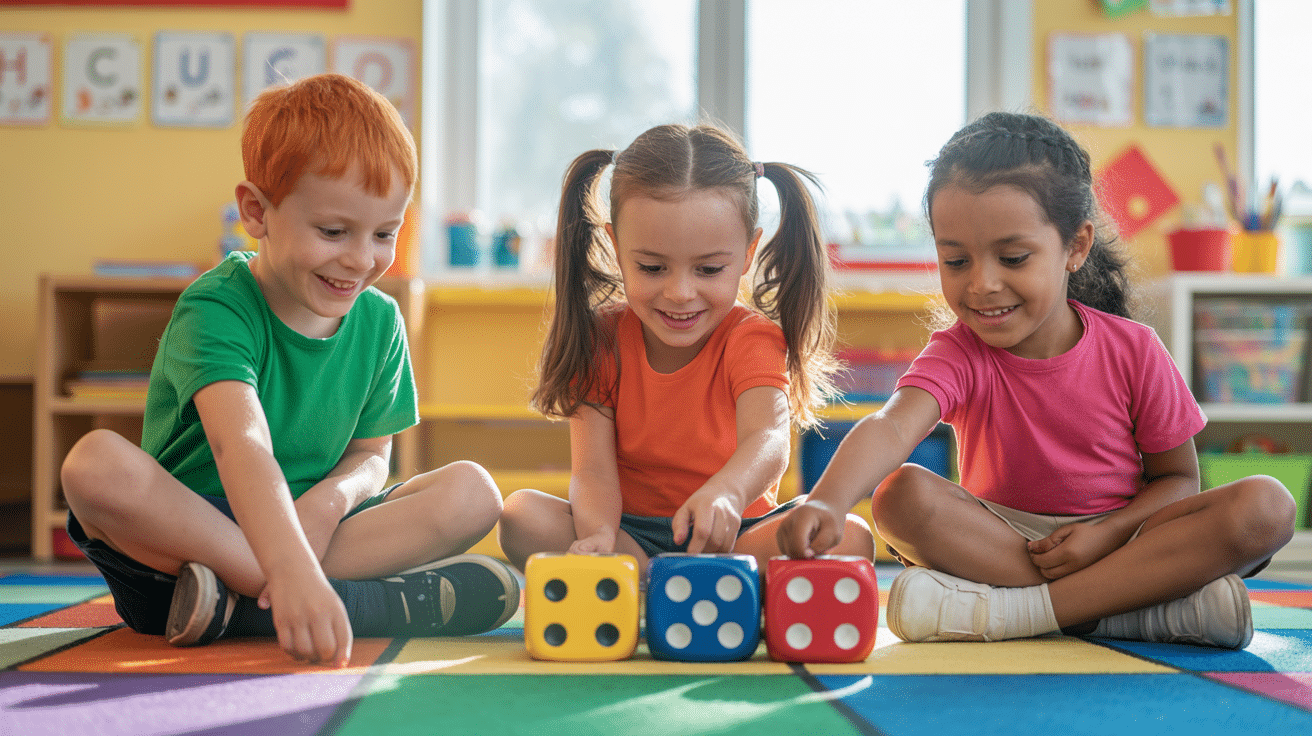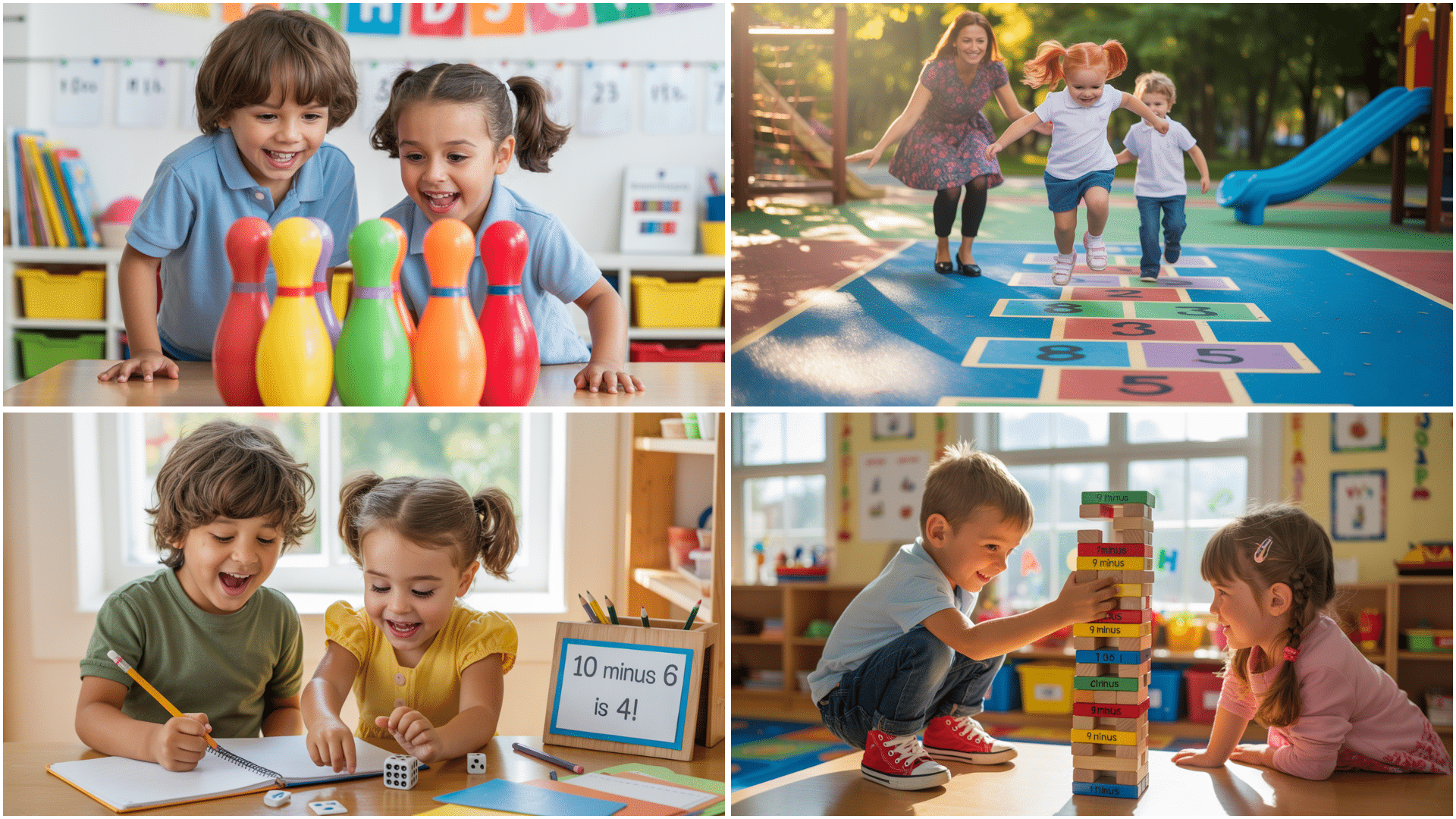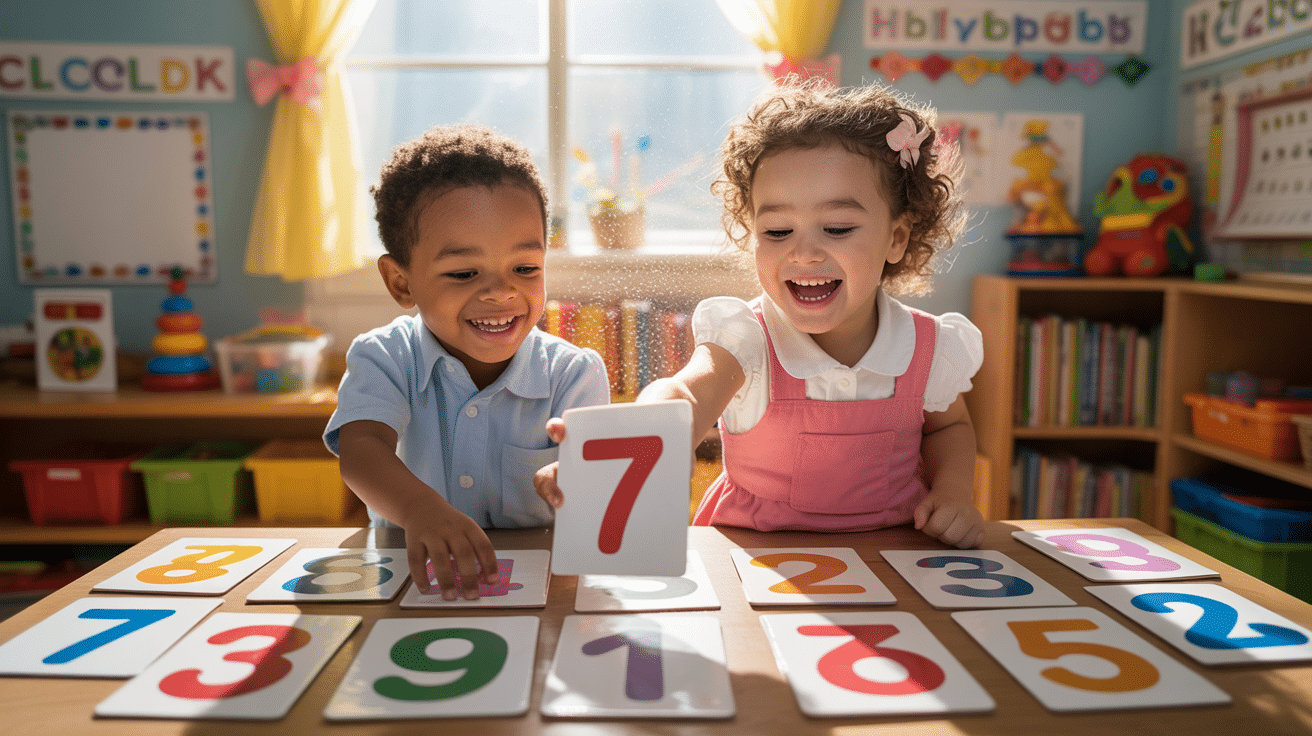Math can be tough. Kids often struggle with numbers, especially when they start learning how to take away.
Parents and teachers notice this pain point.
Little ones get confused when counting backward or figuring out what’s left after removing items.
But here’s something neat: subtraction games for kindergarten make math fun! These activities turn number problems into play time.
This blog shares a list of fun games that help small hands grasp big math ideas. No fancy tools are needed, just everyday items and a few minutes each day.
Importance of Substraction for Early Learners

Subtraction builds the base for all future math skills. Children who learn to take away objects and numbers early can better handle more complex math concepts later on.
When kids work with subtraction, they build key thinking abilities:
- They learn to count backward.
- They understand “less than” relationships.
- They start to see number patterns.
- They begin to solve simple problems.
Teachers include subtraction in kindergarten because it helps children make sense of their world. Taking cookies from a plate or sharing toys with friends becomes a math lesson in real life.
Interactive Subtraction Games for Kindergarten Kids

Parents and Teachers need effective ways to make math practice engaging. These subtraction games for kindergarten turn subtraction lessons into group activities that students will ask to play again and again:
1. Subtraction Bowling
This game involves using bowling pins and a ball. Players subtract the number of pins knocked down from the total number of pins. It’s a great way for children to practice subtraction hands-on.
- Materials Needed: Bowling pins or plastic bottles, a soft ball
- Group Size: 2-4 players
2. Subtraction Scavenger Hunt
Create subtraction problems and hide the answers around the room or yard. Kids need to solve the problems and find the correct answer hidden in a spot.
- Materials Needed: Pre-made subtraction problems on cards, small items to hide
- Group Size: 1-4 players
3. Subtraction Hopscotch
Draw a hopscotch grid on the ground with chalk and add subtraction problems in each square. Children will hop on the correct answers as they solve them.
- Materials Needed: Chalk, a large open space
- Group Size: 1-2 players
4. Subtraction Bingo
Use bingo cards with subtraction problems instead of numbers. Kids solve each problem and mark the correct answer on their cards, turning math practice into a fun, game-like challenge. The first to complete a row wins!
- Materials Needed: Printable subtraction bingo cards, markers
- Group Size: 2-6 players
5. Subtraction Fishing
Use a fishing pole with a magnet and “fish” with subtraction problems written on them. Each child pulls a fish and solves the problem before moving on to the next.
- Materials Needed: Magnetic fishing pole, paper fish with subtraction problems
- Group Size: 1-4 players
6. Subtraction Matching Cards
Create cards with subtraction problems on one side and answers on the other. Players must match the problem with the correct answer.
- Materials Needed: Printable subtraction cards
- Group Size: 2-4 players
7. Roll and Subtract
Kids roll a die, subtract a number from a target number (like 10), and write or say the answer. This game can be played with a group or solo.
- Materials Needed: Dice, paper, and a pencil
- Group Size: 1-3 players
8. Subtraction Puzzles
Create or purchase subtraction puzzles where kids match problems to the correct answers. They’ll learn subtraction as they piece the puzzle together.
- Materials Needed: Printable subtraction puzzles
- Group Size: 1-2 players
9. Subtraction Stomp
Set up subtraction problems on the floor with tape or paper. Kids solve the problem and then “stomp” on the correct answer.
- Materials Needed: Paper with subtraction problems, tape
- Group Size: 1-3 players
10. Subtraction Number Line Jump
Create a large number line on the floor. Have kids jump from one number to the next based on a subtraction problem.
- Materials Needed: Tape to create a number line on the floor
- Group Size: 1-4 players
11. Subtraction Relay with Balls
Each player takes turns subtracting a number from a larger number, running to a designated area, and then returning to tag the next person. The first team to finish wins.
- Materials Needed: Balls, space for running
- Group Size: 4-6 players
12. Subtraction Dice Roll and Color
Each child rolls a die, subtracts that number from a target number (like 10), and colors the corresponding number on a worksheet.
- Materials Needed: Dice, subtraction worksheets, crayons or markers
- Group Size: 1-4 players
13. Subtraction Jenga
Use a Jenga set, but write subtraction problems on each block. When a player pulls a block, they must solve the problem before placing it on top.
- Materials Needed: Jenga set, permanent markers
- Group Size: 2-4 players
Educational Benefits of Subtraction Games in Kindergarten
Games make math learning stick better than worksheets alone. When children play subtraction games, they connect math to fun and don’t even notice they’re practicing important skills.
The cards, dice, and counters add a physical element that helps concepts sink in. These subtraction games for kindergarten approach turn what might be challenging lessons into moments kids look forward to each day.
- Learning through play increases focus: Children pay attention longer when they’re having fun, which means more time spent with numbers.
- Games build memory: When kids repeat subtraction patterns during play, the math becomes automatic.
- Physical movement reinforces learning: Using hands to move objects helps connect abstract numbers to real quantities.
- Taking turns builds patience: Children learn to wait, listen, and follow rules while playing with others.
- Winning and losing teach emotional skills: Kids practice handling both success and disappointment.
- Teamwork develops communication: Partner games encourage children to explain their thinking and help each other understand.
Helping Kids Learn Subtraction Through Play

Parents can bring math into daily life without making it feel like homework. Simple actions like counting down stairs or removing snacks from a plate teach subtraction naturally.
These everyday moments help children connect math to their real world.
- Use household items for practice: Count toy cars, then remove some and ask how many are left.
- Play store with real coins: Let kids make small purchases and figure out change.
- Frame subtraction positively: Say “You’re getting better at this!” instead of focusing on mistakes.
- Create a math corner: Stock it with counters, dice, cards, and board games for easy access.
- Model a good attitude: Show excitement when using math in cooking or shopping.
- Schedule short, regular practice: Five minutes daily works better than an hour weekly.
- Celebrate small wins: Notice when kids subtract correctly, even in small ways.
When home and school both make math feel like play rather than work, children develop stronger skills and fewer fears about numbers.
Summing It Up
Subtraction games turn tricky math into fun moments for kindergartners.
These subtraction games for kindergarten help young minds grasp the concept of “taking away” while building number sense, memory, and social skills.
When math feels like play, children learn without pressure. They build confidence and skills they’ll use for years to come.
Did these games help your little one? Comment below with which game worked best for your child! We’d love to hear your success stories.




